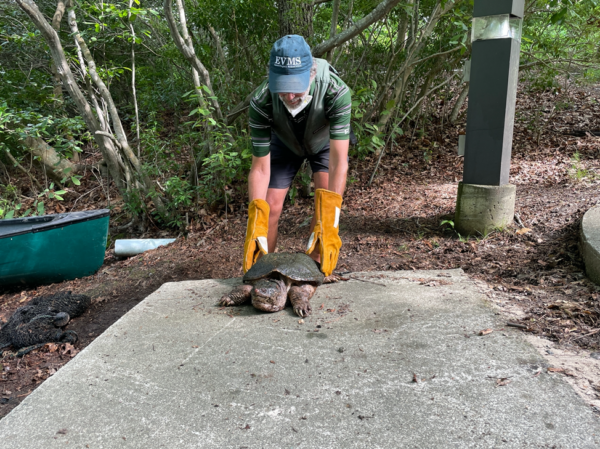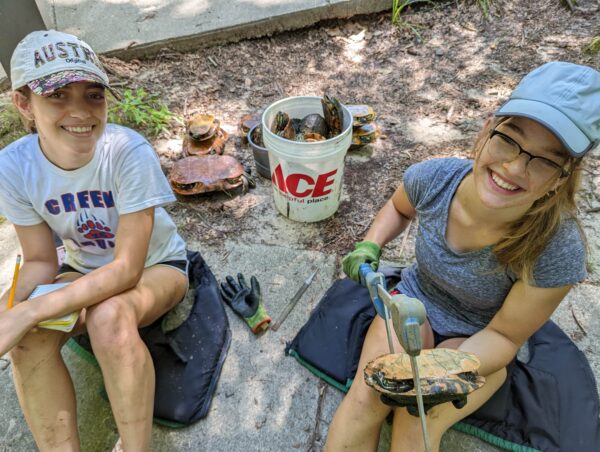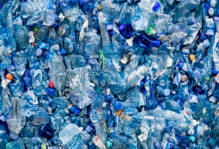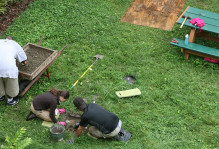They’re Gonna Need a Bigger Boat: W&M Biology Majors Survey Lake Matoaka’s Turtle Community
How many turtles are in Lake Matoaka, and what impacts do they have on the lake’s ecosystem? This question is the subject of a Charles Center summer research grant overseen by the Keck Environmental Field Lab’s Dr. Randy Chambers, who has studied Lake Matoaka’s turtles off and on for twenty years. The on-campus lake was created in the early 1700’s by damming College Creek, and is now used for canoeing, paddle boarding and research activities. And as many students can attest, it is absolutely overflowing with turtles, despite sometimes poor water quality and frequent algal blooms.
This summer, two rising junior Biology majors are busy counting the lake’s chelonian inhabitants and studying their nesting behaviors. Each morning, Cypress Ambrose and Abby DeCesare canoe to the locations of several hoop nets that they have set in the lake. So far they have caught a variety of species, including red-eared sliders (a non-native turtle), red-bellied cooters, painted turtles, musk turtles, and some frighteningly large snapping turtles. At just one lake location they have already caught and released 130 individuals, and have caught an additional 40 at a new location. As the turtles keep piling up (in some cases, quite literally), the students will be able to make a better estimate of the lake’s overall turtle population size as they begin to recapture the same individuals.
The students are also looking into the effect that turtles are having on the lake’s vegetation. To do so, they constructed herbivore excluders that enclose the submerged aquatic vegetation (SAV) growing on the bottom of the lake. When compared to non-covered vegetated areas, the students should be able to tell how much the turtles and other herbivores are consuming SAV. They are also observing turtle nesting behavior around the lake, to see if the non-native red eared slider is exploiting the upland environment more effectively than the native red-bellied cooter.
Though not every William & Mary student will spend their summers counting turtles, we hope that every student will spend some time on and around Lake Matoaka, taking advantage of the canoeing and hiking opportunities available to them. Mainly, we hope to never again hear the question posed by one graduating senior, several years ago: “We have a lake?”
Comments are currently closed. Comments are closed on all posts older than one year, and for those in our archive.






Very interesting!